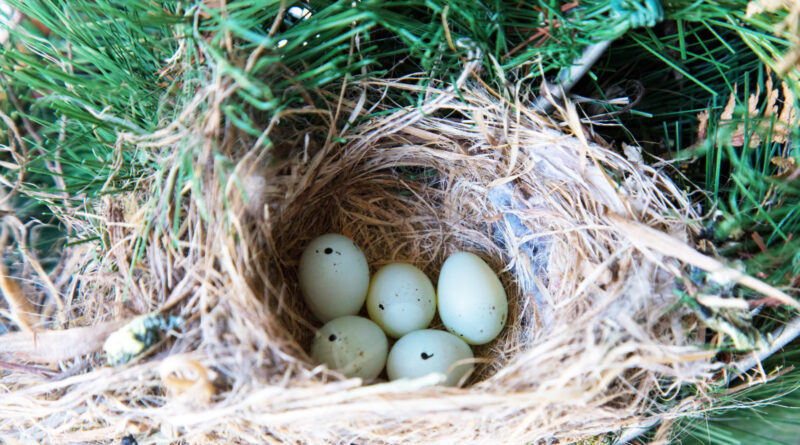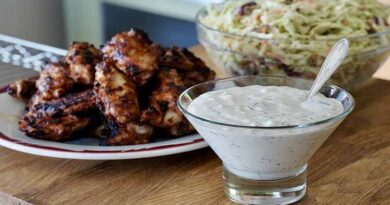Hiding in Plain Sight
One spring day, while walking down my favourite trail, I was startled by a sudden explosion of feathers. A ruffed grouse burst into the air, just inches from my feet. She flapped wildly and began her broken-wing act, dragging one wing pitifully along the ground. It’s a classic trick meant to distract predators—leading them away from her nest.
Sure enough, when I looked down, there it was: a shallow, leafy mound nestled in the forest floor, cradling twelve cream-coloured, speckled eggs. Until that moment, I hadn’t seen her—or her nest—at all. Her feather patterns, a rich tapestry of browns, blacks, and tans, had blended perfectly with the dappled forest floor. Frozen in place, she had completely vanished into her surroundings. But the moment she sensed danger was too close, she burst skyward, diverting my attention away from the fragile promise of her eggs.
Many animals use camouflage to stay safe. This strategy—called concealment camouflage—relies on stillness, colour, and pattern to help an animal blend in. In nature, staying still is often the best defence. That’s why you’ll see a rabbit freeze in a field, or a frog hold motionless in the reeds. They’re trusting that you’ll miss them entirely.
Nature is a master of disguise. Frogs are often mottled green to match the colour of wetland plants. Moths wear the rusty hues of tree bark. And some animals take camouflage even further with a trick called countershading. A white-tailed deer, for instance, is darker on top and paler underneath. This reversal of natural shadow helps flatten their three-dimensional form, making them harder to detect.
Then there’s mimicry—one of nature’s boldest deceptions. Take the walking stick insect, which looks exactly like a twig. Or consider how some caterpillars resemble bird droppings, and how Polyphemus moths flash enormous eye spots on their wings that resemble the stare of an owl. In the natural world, survival often depends on having the perfect disguise.
Camouflaged Eggs – An “Egg-cellent” Example
Bird eggs are marvels of nature. Inside each fragile shell lies the promise of life. They come in an astonishing array of colours, shapes, and markings—but they all share one trait: they roll. And a rolling egg is a risky egg. That’s why birds build nests—to keep their eggs warm, safe, and in place.
Some birds, like the Northern Oriole, weave elaborate hanging nests, while others, like the Killdeer, simply scrape out a shallow hollow in the dirt. Birds that nest on cliffs, such as the Common Murre, lay pointy eggs that roll in tight circles, reducing the risk of tumbling off the edge.
Ground-nesting birds often depend on camouflage to protect their eggs. Killdeer eggs, for example, are streaked and spotted to mimic the pebbles and plants around them. These patterns are produced by two main pigments: protoporphyrin, which gives reddish-brown tones, and biliverdin, responsible for blues and greens. Each mother bird regulates these pigments to paint a perfect match to her surroundings—an evolutionary masterpiece of protective coloration.
Make Your Own Camouflaged Egg
Try this fun activity to see just how tricky camouflage can be!
You’ll need:
• Hard-boiled brown eggs (one per participant)
• Markers and/or acrylic paints
• A natural area to hide your egg
What to do:
1. Look up photos of real bird eggs and study their patterns and colours.
2. Using the photos as inspiration, decorate your egg with camouflage in mind.
3. Take turns hiding your egg in a natural setting that matches your design, while others try to find it.
4. Swap roles and see who’s best at hiding in plain sight!
5. When you’re done, enjoy your eggs—but peel them carefully so none of the colouring touches the edible part.
Submitted by Jacob Rodenburg, Author & Executive Director of Camp Kawartha, an award-winning outdoor education centre and summer camp.




